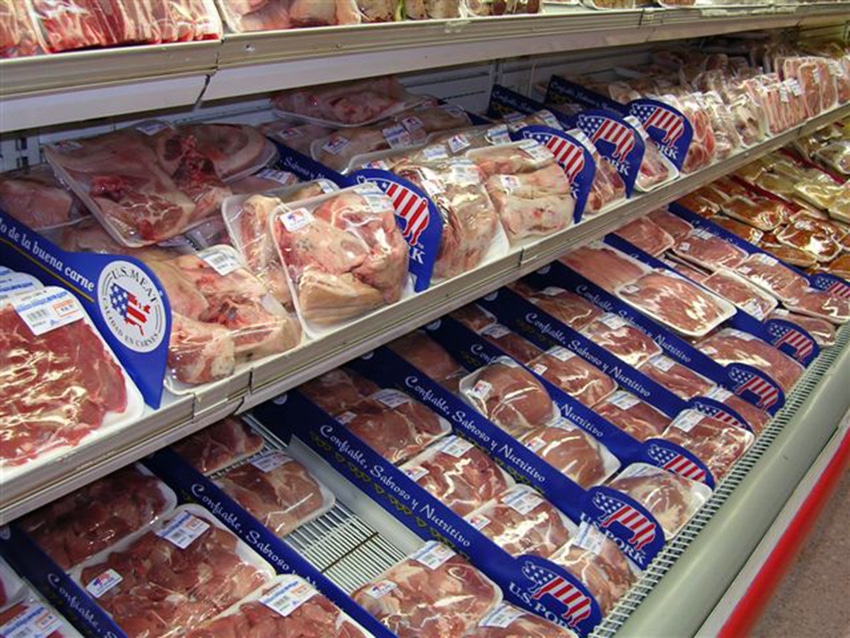The domestic consumption growth rate animal protein has experienced over the last five years is expected to plateau soon.
January 31, 2019

Per capita animal protein consumption in the United States is set to reach to an all-time high in 2019, however the animal protein sector will soon be entering a period of transition as four consecutive years of significant domestic consumption growth is now beginning to pressure prices and producers’ bottom lines, according to a new report from CoBank’s Knowledge Exchange Division.
“The domestic consumption growth rate animal protein has experienced over the last five years is expected to plateau soon,” says Will Sawyer, animal protein economist with CoBank’s KED. “With the cow herd at multi-year highs and pork and poultry processors expanding capacity, exports will likely underpin further industry expansion for the U.S. in the years ahead.”
Sawyer says export growth will be key for U.S. beef, pork and chicken producers as growing meat supplies and processing capacity outstrip domestic demand. In 2018, the U.S. exported 12% of beef production, 16% of chicken production and 23% of pork production. While these figures are far higher than where the industry was 20 years ago, further growth in exports will be needed if U.S. producers want to expand production in the coming years.
“While the need for increasing exports is clear, it’s frequently met with concern or skepticism among producers and all links throughout the supply chain,” Sawyer says. “Concerns lie primarily in the fear that the more exports play a role in supply and demand, the more exposure producers and industry participants have to increased market volatility and lower margins.”
Bigger risk, bigger reward
Greater reliance on export markets has resulted in higher prices for the animal protein sectors in other exporting nations, including Australia, Brazil and Canada. However, analysis shows that greater profitability has offset that price volatility for beef, pork and poultry producers in each of those countries, despite declining domestic consumption in both Australia and Canada.
In the comparison of Brazilian poultry to U.S. poultry, Brazilian poultry price volatility over the last 15 years has averaged approximately 15% per year, while in the United States it has been slightly less at around 12%. Conversely, over that same time period Brazil’s poultry producers have seen an average increase in prices of 6%, while prices for U.S. producers have increased just 2.6%.
“In other words, Brazilian producers experience just 2.5% of price volatility for every percent increase in prices while U.S. producers endure 4.5% of price volatility for the same degree of price change,” Sawyer says.
This superior risk-to-reward level is also true for Canadian pork and Australian beef relative to the United States. In the case of Australia, fed cattle prices have been slightly less volatile than what U.S. producers have experienced over the last 15 years, all while having a slightly higher rate of return. This is significant as Australia exported 71% of its production in 2018 while the United States exported just 12%, which were all-time high levels for both markets.
Growth opportunities involving exports can carry significant risks as demonstrated during recent trade disputes between the United States and some of the most important international customers for U.S. animal protein. However, those who accept these risks are often rewarded, according to Sawyer.
“Profitable growth has always been at the core of the industry, and has enabled producers and processors to recover from the historic volatility and costs from 2007 through 2012,” Sawyer says. “The groundwork has already been laid from the supply chain to industry representation to let trade drive the industry forward over the next decade. Long-term, exports will be the key driver for further expansion across the animal protein sector.”
With meat supplies back at all-time highs, opportunity for growth lies in international markets, Sawyer concludes. The increased market volatility that comes with greater exposure to export markets is offset by higher prices and improved profitability for producers.
Source: CoBank, which is solely responsible for the information provided, and wholly owns the information. Informa Business Media and all its subsidiaries are not responsible for any of the content contained in this information asset.
You May Also Like



